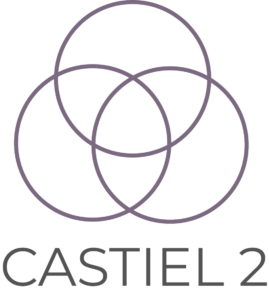BigDFT is an electronic structure pseudopotential code that employs Daubechies wavelets as a computational basis, designed for usage on massively parallel architectures. It features high-precision cubic-scaling DFT functionalities enabling treatment of molecular, slab-like as well as extended systems, and efficiently supports hardware accelerators such as GPUs since 2009. Also, it features a linear-scaling algorithm that employs adaptive Support Functions (generalized Wannier orbitals) enabling the treatment of system of many thousand atoms. The code is developed and released as a software suite made of independent, interoperable components, some of which have already been linked and distributed in other DFT codes.
CoE: MaX
FLEUR (Full-potential Linearised augmented plane wave in EURope) is a code family for calculating groundstate as well as excited-state properties of solids within the context of density functional theory (DFT). A key difference with respect to the other MAX-codes and indeed most other DFT codes lies in the treatment of all electrons on the same footing. Thereby we can also calculate the core states and investigate effects in which these states change. FLEUR is based on the full-potential linearised augmented plane wave method, a well established scheme often considered to provide the most accurate DFT results and used as a reference for other methods. The FLEUR family consists of several codes and modules: a versatile DFT code for the ground-state properties of multicomponent magnetic one-, two- and three-dimensional solids. A focus of the code is on non-collinear magnetism, determination of exchange parameters, spin-orbit related properties (topological and Chern insulators, Rashba and Dresselhaus effect, magnetic anisotropies, Dzyaloshinskii-Moriya interaction).
CoE: MaX
YAMBO is an open-source code released within the GPL licence. It is suitable to calculate and predict the physical properties of materials related to light-matter interaction. It makes use of ab-initio methods, meaning that the calculated properties do not rely on any adjustable parameters but they are obtained by solving the fundamental equation of quantum mechanics. In particular YAMBO implements Many-Body Perturbation Theory (MBPT) methods (such as GW and BSE) and Time-Dependent Density Functional Theory (TDDFT), which allows for accurate prediction of fundamental properties as band gaps of semiconductors, band alignments, defect quasi-particle energies, optics and out-of-equilibrium properties of materials, including nano-structured systems. The code resorts to previously computed electronic structure, usually at the Density Functional Theory (DFT) level and for this reason it is interfaced with two of the most used planewave DFT codes used in scientific community, Quantum ESPRESSO and Abinit.
CoE: MaX
SIESTA is a first-principles materials simulation program based on density-functional theory (DFT). It was one of the first codes to enable the treatment of large systems with first-principles electronic-structure methods, which opened up new research avenues in many disciplines. SIESTA has become quite popular and is increasingly being used by researchers in geosciences, biology and engineering (apart from those in its natural habitats of materials physics and chemistry). SIESTA‘s efficiency stems from the use of strictly localized basis sets and from the implementation of linear-scaling algorithms which can be applied to suitable systems. A very important feature of the code is that its accuracy and cost can be tuned in a wide range, from quick exploratory calculations to highly accurate simulations matching the quality of other approaches, such as plane-wave methods.
CoE: MaX
Quantum ESPRESSO (Quantum opEn-Source Package for Research in Electronic Structure, Simulation, and Optimisation) is a suite of open-source codes for quantum materials modelling using the plane-wave pseudopotential method; the suite provides a wide set of common fundamental routines and has been the platform for such important methodological innovations as Car-Parrinello molecular dynamics and Density-Functional Perturbation Theory. It is released under the GNU GPL. It implements density-functional theory (DFT) in the plane-wave pseudopotential approach, but it also includes more advanced levels of theory: DFT+U, hybrid functionals, various functionals for van der Waals forces, many-body perturbation theory, adiabatic-connection fluctuation-dissipation theory.
CoE: MaX
XIOS, or XML-IO-Server, is a library dedicated to I/O management in climate codes. XIOS manages output of diagnostics and other data produced by climate component codes into files and offers temporal and spatial post-processing operations on this data. XIOS aims at simplifying the I/O management by minimizing the number of subroutines to be called and by supporting a maximum of on-line processing of the data
CoE: ESiWACE
Cylc, a Python based workflow engine and meta-scheduler
The workflow engine Cylc (“silk”) manages a set of dependent tasks that need to run in a given order and deal with exceptions. It specialises in continuous workflows of cycling tasks such as those used in weather and climate forecasting and research (i.e. tasks can repeat at particular time intervals and can be triggered off the wall clock time as well as other tasks). Cylc is also easy to use with non-cycling systems. Cylc was created by Hilary Oliver at NIWA. Its core team now includes Hilary as well as members in the Modelling Infrastructure Support Systems Team at the Met Office.
Cylc was developed as a generic tool to help with the increased complexity of workflows used in the weather and climate communities and to replace the increasingly complex script-based solutions typically used within the community. It is currently being used for a very wide range of requirements from research to real-time operations including ensemble prediction systems. Cylc is also used for a wide variety of workflows such as generation of input data, assimilation of observational data, modelling post processing and commercial product generation.
CoE: ESiWACE
OASIS coupler is a software allowing synchronized exchanges of coupling information between numerical codes representing different components of the climate system. Current OASIS developers are CERFACS (Toulouse, France) and Centre National de la Recherche Scientifique (Paris, France).
OASIS3-MCT, the version of the OASIS coupler interfaced with the Model Coupling Toolkit (MCT) from the Argonne National Laboratory, offers today a fully parallel implementation of coupling field regridding and exchange. Low-intrusiveness, portability and flexibility are OASIS3-MCT key design concepts as for all previous OASIS versions. OASIS3-MCT is a coupling library that needs to be linked to the component models, with the main function of interpolating and exchanging the coupling fields between these components.
OASIS3-MCT supports coupling of general two-dimensional fields. Unstructured grids and 3D grids are also supported using a one dimension representation of the two or three dimensional structures.
CoE: ESiWACE
NEMO standing for “Nucleus for European Modelling of the Ocean” is a state-of-the-art modelling framework for research activities and forecasting services in ocean and climate sciences, developed in a sustainable way by a European consortium.
The NEMO ocean model has 3 major components:
• NEMO-OCE models the ocean {thermo}dynamics and solves the primitive equations
• NEMO-ICE (SI3: Sea-Ice Integrated Initiative) models sea-ice {thermo}dynamics, brine inclusions and subgrid-scale thickness variations
• NEMO-TOP (Tracers in the Ocean Paradigm) models the {on,off}line oceanic tracers transport and biogeochemical processes (using PISCES)
These physical core engines are described in their respective reference manuals that must be cited for any work related to their use.
CoE: ESiWACE
L-HySEA solves the 2D shallow water/Savage-Hutter coupled equations, hydrostatic fully coupled and dispersive weakly coupled versions. L-HySEA is based on high-order FV discretization (hydrostatic) with FD for dispersive model, structured meshes in Cartesian coordinates.
CoE: ChEESE

The website is operated as part of the CASTIEL 2 project. This project has received funding from the European High-Performance Computing Joint Undertaking (JU) under grant agreement No 101102047. The JU receives support from the European Union‘s Digital Europe Programme and Germany, Italy, Spain, France, Belgium, Austria, Estonia.

